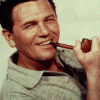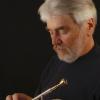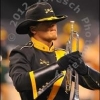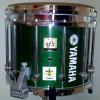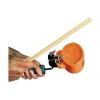Leaderboard
Popular Content
Showing content with the highest reputation on 11/27/2014 in all areas
-
OH MY GOD!!! I'M OFFENDED!!!! HOW DARE THEY CHEER AND ACT IMMATURE WHEN THE CORPS IS DRAWING A REACTION!!!!! CLASSLESS IMMATURE FOOLS!!!!3 points
-
Really agree, Mike. And that drum line... The whole organization is tasty to me because it's so "drum corps-like". Great job to those kids and that staff. Madison shook the windows for blocks. I knew the sound guys were not going to be ready for that. There was more dynamic range from Madison than from most of the pre-recorded lip-sync crap that played there. I'm glad NBC includes the bands. If they didn't, I wouldn't watch.2 points
-
This was an Article in a local magazine about a Carolina Gold Corps member. www.ourstate.com/carolina-gold/ I am not sure if the link works you may have to paste the address in the search window.2 points
-
Just wanted to take a moment and congratulate the Madison Scouts on a job well done in the Macy's Thanksgiving Day parade. You looked and sounded awesome on TV. Did drum corps proud. Hope everyone involved had a great time and has a wonderful Thanksgiving!!!!1 point
-
Ditto on this one. I was watching with my family and they caught it too...we all just kind of looked at each other and laughed.1 point
-
That would be a laugh especially since he pulls in 25m each year plus a limo.1 point
-
1 point
-
"Thanksgiving", when we recall the story of the original Americans sharing their food with a bunch of undocumented aliens from Europe. Totally subjective list of things for which I am thankful: - air - the Vincent Bach 3-C - the other Bachs - the Dream - the "stratospheric upper register" (thank you , Andy,... and Joe, and John, and Hightower , and Maynard, and Arturo...etc.) - the Guess Who Historical Society, especially you, Nanci Later I'll be counting how many of the old guys from Madison actually make it to the end of the parade in NY. I'd like to hear "Slaughter on 10th Avenue" (how apropos), but it's probably going to be "Jingle Bells".1 point
-
i assume this is the Madison parade corps playing 'Happy' (video): https://www.facebook.com/video.php?v=10205503284485404 edit: looks like corpsband beat me to it a couple pages ago... oh well. can always have more drum corps!1 point
-
I hope the men from Madison fare better in the snow than that poor gal in the Georgia State guard who wiped out on national TV.1 point
-
1 point
-
... and that's just the way Dreitzer, Genero, Sasso, Bunce, Pepe, et al used to teach some of the most intense horn lines that drum corps has ever known from my era ... a judge once asked Genero how he got the Hurcs to play a certain passage from Hallelujah (sp) in that stratospheric upper register ... he answered: "I never told them they couldn't" ... :-)1 point
-
1 point
-
Thanks for the description. I would think judges might be evaluating things like how identical their movements are to each other (when they are trying to be identical), how expressive they are (how much the mood or attitude pops off the guard so to speak, or how much they own the character), speed of movement, stamina, certain known moves, as well as standard equipment like speed, height, number of spins, etc. It's funny how if you're in a brass section, say, you really have know idea how the people standing right over there do what they do. That includes the drums! Anyway the Phantomettes are always the "Ginger Rogers guard" as far as I'm concerned. Or maybe Vivien Leigh.1 point
-
Sometimes thats the best way to look at the activity or any competition for that matter.1 point
-
Mike I'm surprised!!!! I'm surprised you didn't see them until 1976, guess too much GSC time. Saw them day after DCI at Hershey live 1975 and have the DVD from that year. And thinking about it, BD was cutting edge then for use of jazz and body movement (drum line during "Legend of the One Eyed Sailor" concert). So what's the surprise they are a bit "different" in 201x......1 point
-
It's not trivial, at all. Sitting at breakfast this morning with my old roommate, Ralph Hardimon, he pointed to a quote on a news feed: "Hatred has caused many problems, but it sure hasn't solved any." All my experience in teaching indicates that people will only truly learn from example. Sometimes the best way to teach technique is to simply say, "Just make it sound like this." So, let's just live the solution daily. Illegitimi non carborundum. I think the space aliens let us live primarily because we can make music. The rest they can do without.1 point
-
1 point
-
Maybe you have to Look Through a Glass Darkly to see them?!?!?!1 point
-
Without taking anything away from anything more recent, I think you could make a convincing case for Star 91 as one of if not the most difficult horn books ever.1 point
-
Some PERSONAL favorites: Cavaliers 1989 "Gloria" opening sequence, some really cool kaleidoscopic drill. Star of Indiana 1990 "Belshazzar's Feast" closing minute and a half, they are booking it, and I love the company front that comes from nowhere at the end. Star of Indiana 1991 needs no explanation. The Cadets 1992 "To Tame the Perilous Skies", the whole show really, but the plane move is pretty neat in itself. Santa Clara Vanguard 1997 - 1998, Myron Rosander at his best. "On the Waterfront" sticks out to me. 2002 is another I enjoy, some really cool visual representation of the theme that he uses throughout the show, especially in the closer. Glassmen 1998 - 2002, Phantom Regiment 2011 and 2012, Jamey Thompson at his best. Vanguard 06 - Present, all amazing stuff. Pete Weber's probably my favorite writer.1 point
-
Certainly heel marktime won't unbalance you any more than actual marching will, and since they're going to have to play on the move sooner or later they should be practicing it now. Besides, if you have any weight on your heels in today's drill you're dead in the water. and now a lengthy bit on visual technique. apologies if some of this is just common knowledge, but JimF's question is making me second-guess how much people really do know about the state of the thing now. consider this a primer for someone who perhaps has some show band experience but no idea what to expect of a corps package. The difference, as best I can tell, between the pure-form straight-leg Cadets style and the more often used BD/Crown/everyone "straight-leg" is the positioning of the heel throughout the stride. Cadets-style strives to keep the heel as low as humanly possible throughout the entire stride, lengthening the leg as much as you can. If you freeze a Cadet right as their front foot lands in the middle of a set, when their legs are as far apart as they're going to get, their back heel should be very close to the ground. If you freeze a Boston Crusader or a Blue Star in the same circumstances, their back heel will be off the ground. This slight difference allows the ankles to act as shock absorbers and helps eliminate the bouncy Cadet syndrome; the heel naturally wants to come off the ground to prepare for the next step, but keeping it low lengthens and straightens legs. One of the main reasons you see more bounce when corps backward march is that the ankle "shocks" can't do as much going backwards. The Cadets compensate for thirs with prodigious body carriage. Almost all forward marching technique emphasizes lifting the toes as high off the ground as humanly possible on count 1. this means that the heel is as low as possible, which in turn means the leg is as straight and long as possible, and also means that you can more easily take a large, fast step. Speaking of backwards march- the majority of the world class groups use the standard straight-leg back march as well, lifting off of the heels and onto the "platform" (for those who aren't familiar with the lingo, this is the ball of your foot, or more specifically the triangle of ground contact created between the bone behind your big toe, the outside bone of your pinky toe, and the meaty patch between them that comes to a point between the base of your 2nd and 3rd toes.) Usually you get up on the platforms slowly, going from flat-footed to releve over 2-3 counts rather than "popping" up on your platforms before your step back or on the first step, to help reduce bounce and to avoid sudden distracting movement. Backwards marching is hard to master and everyone ALWAYS underestimates the size of the steps they are taking, no exceptions. Any vis tech worth his salt will tell you that getting to extended step sizes when going backwards relies on a solid push from the front foot rather than "reaching" with your back foot. I might be mistaken, but I've heard it said that the green machine's technique is focused on the idea of maintaining a 90 degree angle between your feet. This probably came about as an easy way for members to check themselves, since this means that one foot has to roll up as the other comes down. They also use a squatty variation for large step sizes that makes it look like they're moving a lot faster than they are, particularly in Mr. Gaines's pinwheel-heavy segments. The older BK technique was very ballet-based, and ballet terminology has definitely made its way into modern corps. Sometimes there's more french in basics than english. I'd say that 80-90 percent of corps members now know a sort of variation of ballet positions that has developed into a corps vernacular- 1st position is the standard attention position, heels-together-toes-apart, usually slightly narrower than the ballet standard it is borrowed from. Industry standard definitions for how far apart your toes are- "one fist-width between the big-toe knuckles" "toes pointing out at 45 degrees" "imagine an average slice of pizza between your toes" etc. The Cadets use the George. M. Parks Bando-standard of heels and toes together whenever they halt or stand; other groups call this "first parallel" and prefer the toes-apart stance for the stability it provides, particularly when you come screaming into a halt at 200bpm. 2nd position: legs slightly wider than shoulder width, feet still "turned out" as in first position. from there you can go on to 3rd, 4th, and 5th. these are a bit more complicated, but 4th is Regiment's "Kick Halt" position, so that should give you some idea. (maybe they call it 3rd?) The right foot goes out in front of the left for 3rd, followed by in to the arch of the left for 4th, then behind for 5th with the right arch against the left heel. Other ballet terminology is smattered about (pardon my spelling errors)- demi- and gran-plies, ron de jons, posses, elevers, arabesques, tondues, piques, and on and on and on. Basically these dance terms become a shorthand for the vis staff to easily and quickly define body movement and give members a standard to refer to. "Okay, in this sixteen counts we want a lunge with your left foot to the 45 on 4-5-6, demi-plie 7-8, pop up into releve on 9 with the right foot in an arabesque behind you, close down on 10. try it out... ..and RESET, taking that sixteen counts." In terms of basic visual technique, the current trend I've seen is for the majority of the weight to be on or forward of the balls of the feet; this presents an aggressive front and helps keep the chest strong, making a solid base for horn carriage and breathing. It also means that a line of marchers can step off in any direction they please without giving away where they're headed by leaning or shifting weight for a stepoff, making the drill snappier and more uniform. Elbows are wherever the vis staff feels like putting them, but the most often used reference is the clock face- 4 and 8 or 5 and 7. Occasionally someone will throw an angle out ("elbows at 120!") or try some other definition to get it to stick ("tops of elbows at the bottom of the valve cluster" "one fist between parallel to the ground and the tops of the elbows"). Extremely erect posture is always stressed, with phrases like "engage the core" and "lift up from the top" being commonly used. Ideally the chest is open and lifted, shoulders down, and neck fully extended upwards, with the distance between the top of your hips and the bottom of your ribcage maximized. Jazz running isn't nearly as boiled down as forward or backward marching; each group seems to have their own variation on theory and execution. many are rooted in a basic ballet technique, but some groups (Cadets) try to make it resemble their regular technique as much as possible. Phantom seems to swing wildly back and forth between a brutally straight-legged and flowing half-crouched ballet run. BD is actually jazz running all of their sets and we just never noticed. The majority of jazz-run techniques will have marchers turning out their feet, rather than maintaining parallel "tracks", and using a strong push to ensure they get far enough and that the back leg extends straight out. If you're at a particularly extended step size you may be completely off the ground during the crossing count. Proper jazzrun usually involves a lot of ankle strength both to push off and catch without jarring bounces- my favorite vis tech description is "pretend you're flicking a giant lighter with your foot." Hand positions and movements, etc. are all carefully defined and coordinated, though often on an instrument-by-instrument basis; "we will always wear our shakos at this angle." "We always have sticks at this height when we put them away." "we will always enter and exit our warm-up area in this order." "Our right thumb will always go between the first and second valve casing one inch down from the leadpipe." Depending on how BITD we're talking here, sliding may or may not have been a large focus, so here's a rundown- essentially in curvilinear drill your legs are going to be moving all kinds of directions that aren't perpendicular to the front sideline, but your upper body should always be facing that way. A lot of high schoolers struggle with getting their shoulders around square to the front, but most corps do this without blinking. Corps often have very specific definitions about where horns should be pointed; some always aim directly at the judges, others at the middle of the audience, some are always parallel to the sideline, others are always pointed at the DM; there are also often definitions about whether to forward or backward march when moving parallel to the sidelines. A common one is that if you are moving away from the 50 you should backward march and if moving towards it, forward march. If your group always points to the center of the stadium, or points inwards once outside the 30s/40s/, you may have to slide past perpendicular. If you're looking straight down on a horn player on the 10 yard line, their hips might be facing 120 degrees away from their shoulders. Basically, visual style in corps has a lot of specific knowledge and an enormous amount of minutia that is carefully defined and constrained. I can't personally speak to how much people know from their band programs or "BITD" corps experience, but i feel like the heavy use of ballet terms is fairly new and that the physical expectations are probably higher. The highly regimented military-style micromanagement is something that I think is probably a proud tradition and that those who got penalties for inspection tics can relate to still :p1 point
-
I was not joking about Barbara...she, and the whole Garfield zeitgeist of the 1983 season (beginning at finals in 82...) is the stuff of great movies - films like Blindside, the movie about the El Paso State (Texas) all-black starting team that won the NCAA title in the '60s, The Rookie, and other such films about triumph over adversity. Focusing on one character - especially one with a physical challenge as well as an obviously highly musical soul - would ratchet up the tears factor (always great for memorability) - and the 'sports' aspect - the Cadets sniffing a possible victory in 1983 - the staff making great, not so great, terrible...and ultimately all the right choices. Donnie Van Doren hijacking the entire corps on the afternoon of finals for a nap (or whatever that was...) when all the rest of the staff wanted to open a can of whup ### all over the corps because they'd lost prelims to SCV... That's a film I'd not only go see (and obviously I think others would, too), but I'd buy the DVD (not Donnie...you know...)1 point
-
We should just stop trying to make up something cute, and just do the Barbara Maroney story, starting with finals in 1982 and culminating in finals in 1983...1 point
-
1 point
This leaderboard is set to Chicago/GMT-05:00


